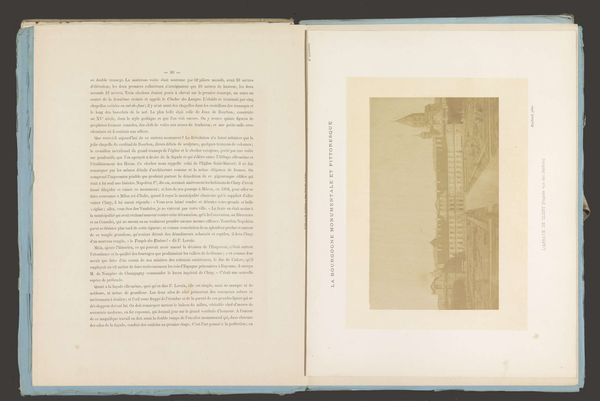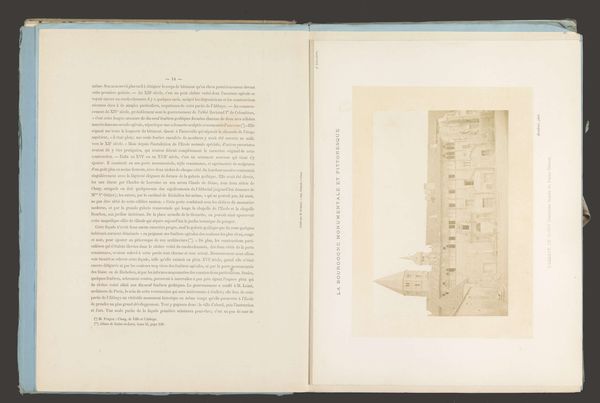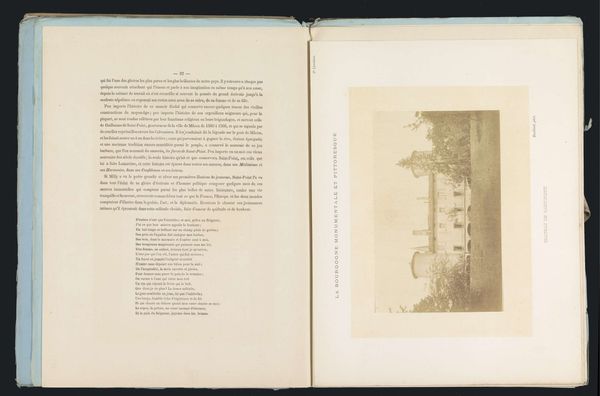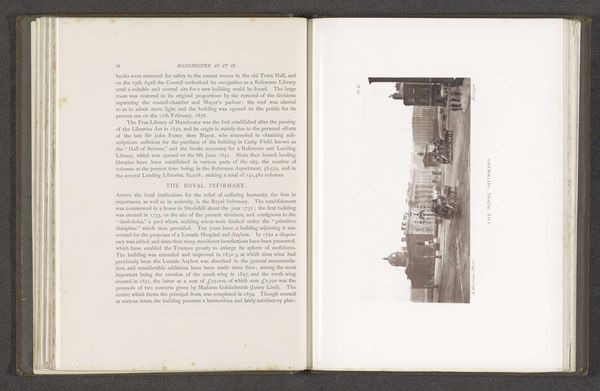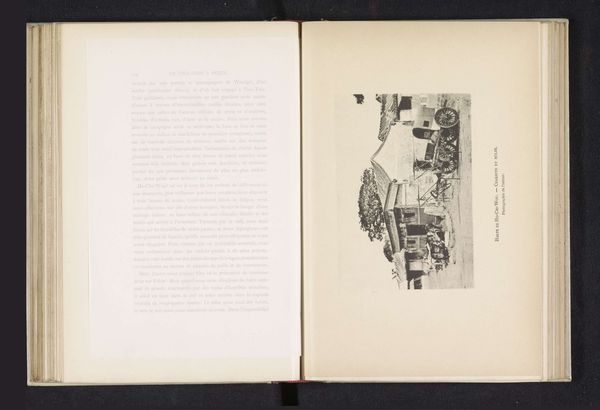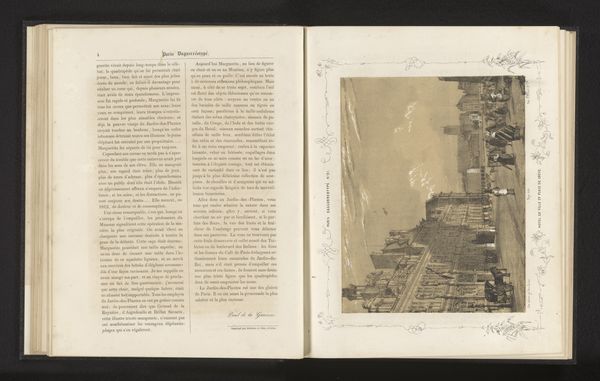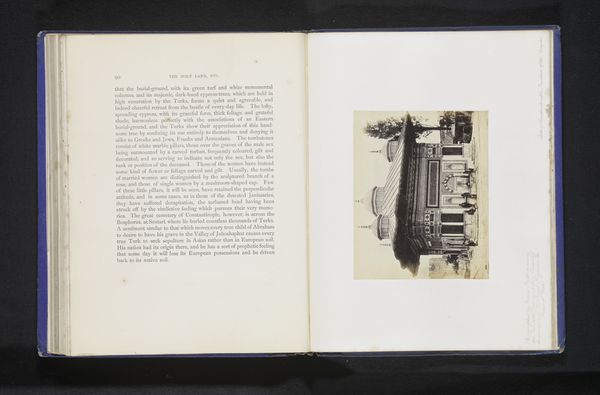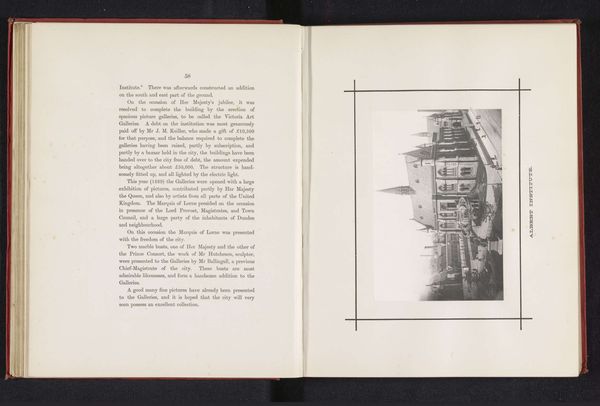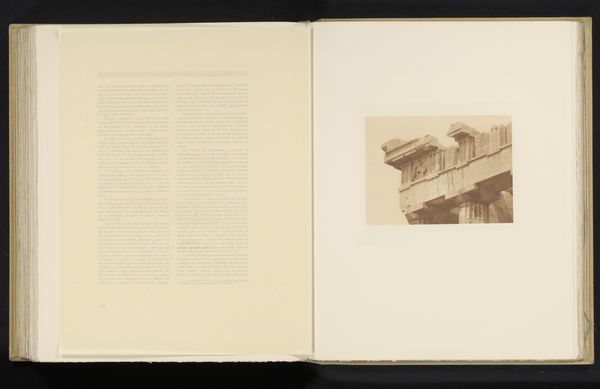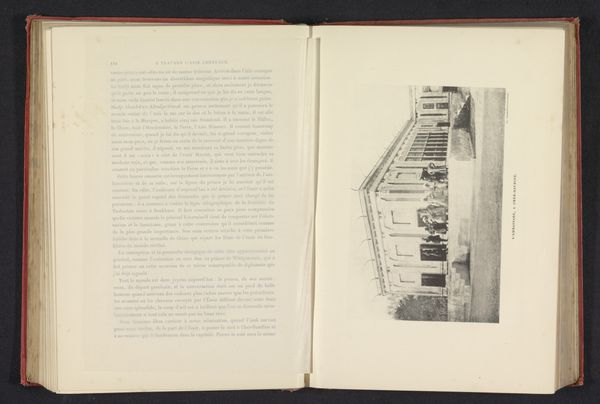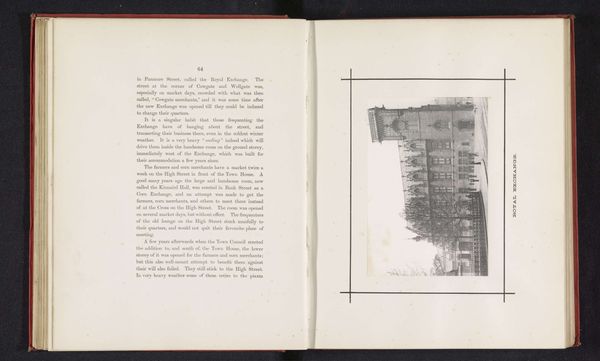
print, photography, architecture
# print
#
landscape
#
photography
#
romanesque
#
architecture
Dimensions: height 130 mm, width 219 mm
Copyright: Rijks Museum: Open Domain
Curator: "View of the Abbey of Saint-Philibert in Tournus" is an early photograph, placing architecture firmly within landscape photography. It's interesting how a "monumental" Romanesque church becomes a subject for mass reproduction via printmaking techniques of the time, no? Editor: I see that, it's pretty cool. This image does feel different from other photographs from this era; there’s a very human, lived-in quality to it, which I wouldn’t expect of this era. How do you see the use of materials here impacting the interpretation of the artwork? Curator: Well, the photograph itself as a printed medium allows for distribution, transforming something as monumental as this church into a consumer good. So it speaks to questions about labor and artistic production at the time. Boulland may have conceived this work not as capturing just an aesthetic of architecture, but of showcasing what could be seen through accessible methods such as photographs in order to transform architecture itself through the processes of mechanical reproduction. What do you make of that thought process? Editor: That’s a really cool thought that definitely provides new insights on this piece. I hadn’t thought of the photograph itself as changing how architecture can be conceptualized or how it impacts society! I guess, it’s also fascinating how it brings together the boundaries of artistic value too: high art and functional architecture, craft of photography and documentary. Curator: Precisely! The availability and distribution of images shape social narratives, turning monuments into cultural assets ready for popular consumption and study. Editor: Definitely something for me to think about on my walk home! Thanks for providing the analysis! Curator: Likewise! These dialogues on artistic creation really open the mind.
Comments
No comments
Be the first to comment and join the conversation on the ultimate creative platform.
